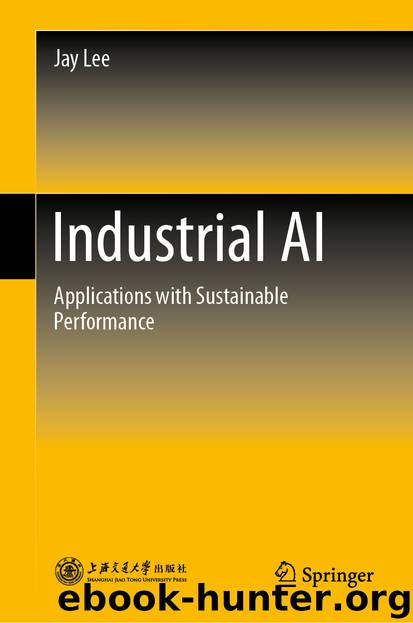Industrial AI by Jay Lee

Author:Jay Lee
Language: eng
Format: epub
ISBN: 9789811521447
Publisher: Springer Singapore
In order to solve these problems, machine learning technology and statistical methods are widely used in multi-stage process system data analysis to help understand and provide direction for improving process quality. Finding quality-related rules with the help of relevant algorithmic tools can help clarify the relationship between quality and variables, help improve the process, and improve the quality yield. Classification and association rule mining are two kinds of commonly used algorithm tools. Classifiers include naive Bayes, principle component analysis (PCA), support vector machine (SVM), k-nearest neighbors (KNN), artificial neural network (ANN), etc.
For most analysis processes, the data from the final station results are directly used for analysis and the qualitative influence between machines is not considered. In this study, the influential relationship between the machines in the MMS is considered, and the quality rules are extracted by the decision tree. Then, they are constructed. By establishing a quality prediction model, we will find the data on the defective product prediction results based on the prediction model, and further analyze the causes of defective results through an a priori algorithm.
In the manufacturing industry, product quality is an important indicator when evaluating the production capacity of an enterprise. There are many factors that affect the quality yield and they are usually related to each other. Finding out the quality-related rules through the relevant algorithm tools can help to clarify the relationship between quality and variables, classifier, and rule exploration. The algorithm can extract rules from the process quality data.
A classifier is a model of data classification based on the information provided and its characteristics of class. The model can provide information about the characteristics of various classes of attribute data and can be used to predict the class of new input data. A decision tree is the most common method for classifiers.
Decision trees refer to a tree-like structure in which the intermediate node (non-leaf nodes) of the tree represents the test conditions, while the branches of the tree represent the test results. Leaf nodes in a tree represent the classification markers obtained after data classification and represent the results of classification. Since the 1960s, many scholars have used tree structures to analyze data, including ID3, C4.5, and CART. ID3 and C4.5 decision trees are only applicable to category variables. If there are continuity attributes, advanced data conversion is necessary. On the other hand, CART decision trees [4] have no such restrictions. Decision trees are a widely used tool for classification and prediction. Also, since decision trees are a tree-based method, they have the advantage of allowing for greater understanding. Generally speaking, the accuracy of a decision tree depends on the number of data sources. If the decision tree is constructed based on huge data sets, the predicted results are usually in line with expectations.
Association rule mining is a method of finding out the relationship between variables in data sets. Initially, association rules were proposed by Agrawal et al. in 1993 [5]. He determined them according to the strength of variable relation rules in data.
Download
This site does not store any files on its server. We only index and link to content provided by other sites. Please contact the content providers to delete copyright contents if any and email us, we'll remove relevant links or contents immediately.
Hit Refresh by Satya Nadella(8983)
The Compound Effect by Darren Hardy(8719)
Change Your Questions, Change Your Life by Marilee Adams(7546)
Nudge - Improving Decisions about Health, Wealth, and Happiness by Thaler Sunstein(7442)
The Black Swan by Nassim Nicholas Taleb(6925)
Deep Work by Cal Newport(6793)
Daring Greatly by Brene Brown(6356)
Rich Dad Poor Dad by Robert T. Kiyosaki(6298)
Principles: Life and Work by Ray Dalio(6102)
Man-made Catastrophes and Risk Information Concealment by Dmitry Chernov & Didier Sornette(5862)
Playing to Win_ How Strategy Really Works by A.G. Lafley & Roger L. Martin(5704)
Digital Minimalism by Cal Newport;(5570)
Big Magic: Creative Living Beyond Fear by Elizabeth Gilbert(5541)
The Myth of the Strong Leader by Archie Brown(5358)
The Slight Edge by Jeff Olson(5309)
Discipline Equals Freedom by Jocko Willink(5229)
The Motivation Myth by Jeff Haden(5113)
Stone's Rules by Roger Stone(4981)
The Laws of Human Nature by Robert Greene(4909)
